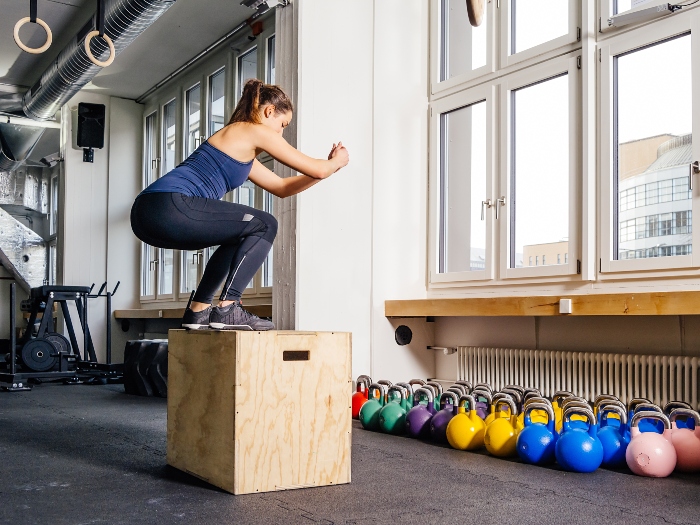Box jumps are a type of plyometric exercise that can help improve lower body strength, power, and explosiveness. They involve jumping onto a box or platform from a standing position. Here’s a step-by-step guide on how to do box jumps:

Choose the Right Box or Platform
Select a sturdy box or platform that is appropriate for your fitness level. The height of the box will depend on your ability level, but it’s generally recommended to start with a lower height and gradually progress to higher boxes as you gain strength and confidence.
Warm Up
Perform a proper warm-up to get your muscles and joints ready for exercise. This can include dynamic stretches, such as leg swings or high knees, as well as a few minutes of light cardiovascular exercise like jogging or jumping jacks.
Stand in Front of the Box
Position yourself facing the box with your feet shoulder-width apart. Keep your arms relaxed by your sides.

Prepare to Jump
Bend your knees slightly, engage your core, and initiate the jump by swinging your arms and forcefully pushing off the ground with your legs. Keep your gaze forward and chest lifted as you prepare to jump.
Jump onto the Box
jump onto the box with both feet, landing softly and quietly. Make sure to fully extend your hips, knees, and ankles at the top of the jump, and avoid landing with your knees caving inwards or your heels hanging off the edge of the box.
Step Down or Jump Down
You can either step down or jump down from the box, depending on your fitness level and comfort level. If you’re a beginner or new to box jumps, it’s generally safer to step down one foot at a time to avoid potential injuries. If you’re more advanced, you can jump down from the box, landing softly and with control.
Repeat for Desired Repetitions
Perform the desired number of repetitions, typically 8-12 for a set, depending on your fitness level and workout goals.
Cool Down
After completing your box jump workout, be sure to cool down with some light static stretching or foam rolling to help improve flexibility and prevent muscle soreness.
It’s important to start with a lower box height and gradually progress to higher boxes as you become more comfortable and confident with the exercise. Always listen to your body and use proper form to minimize the risk of injury. If you’re new to box jumps, it’s a good idea to work with a qualified fitness professional to ensure you’re performing the exercise correctly and safely

